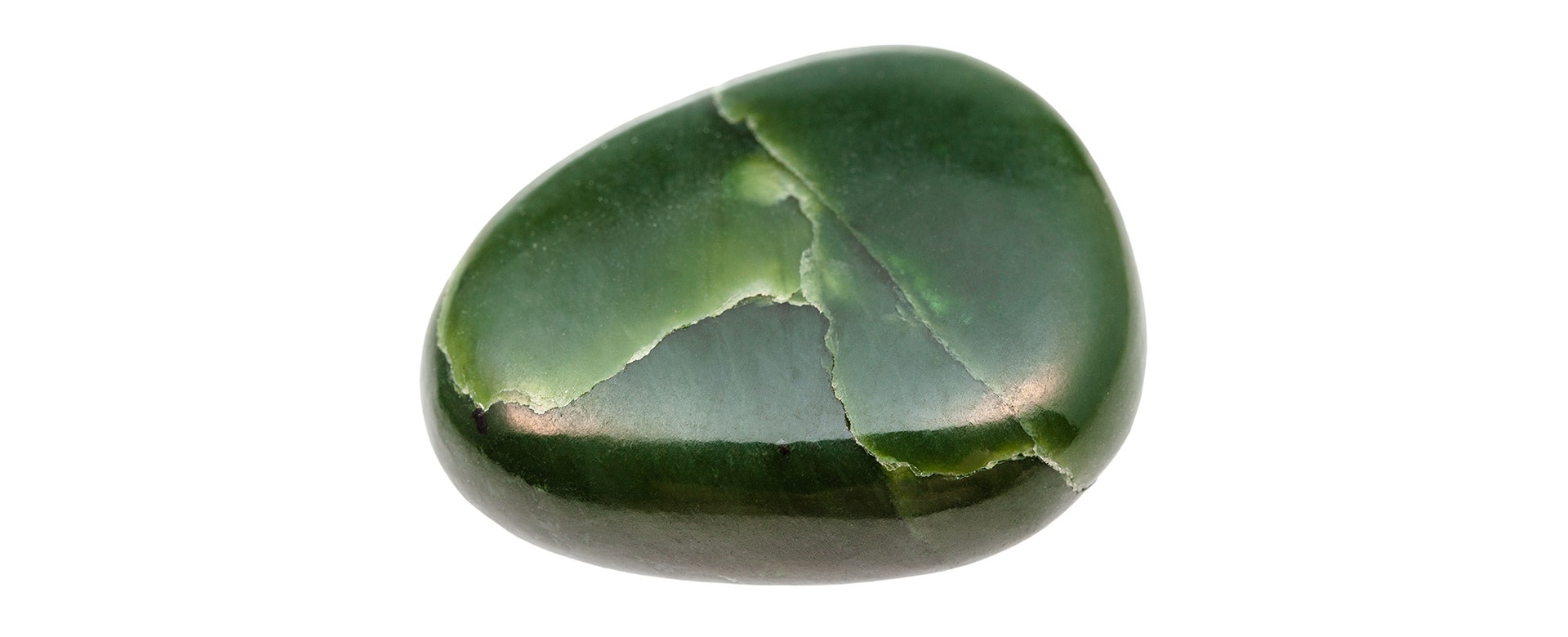Article Highlights
Green Jade, a gemstone rich in history and lore, stands as a testament to the intertwining of nature’s artistry with human culture. Revered across civilizations, Jade’s alluring beauty and mystical properties have cemented its place in the pantheon of cherished minerals.
Overview of Green Jade
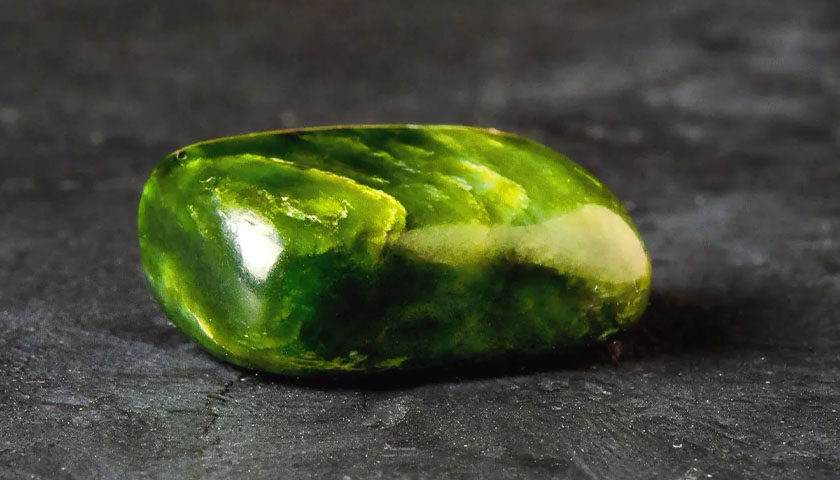
Jade is more than a mere mineral; it’s a cultural icon, deeply embedded in various traditions and histories. It primarily comes in two forms: Nephrite and Jadeite, each with distinct characteristics and origins.
While Nephrite is a silicate of calcium and magnesium, Jadeite is a silicate of sodium and aluminum. Green Jade, specifically, is known for its soothing color which ranges from translucent to a deep, rich green. This coloration, influenced by trace elements like chromium and iron, varies based on its geographical origin and specific mineral composition.
Importance in Various Cultures
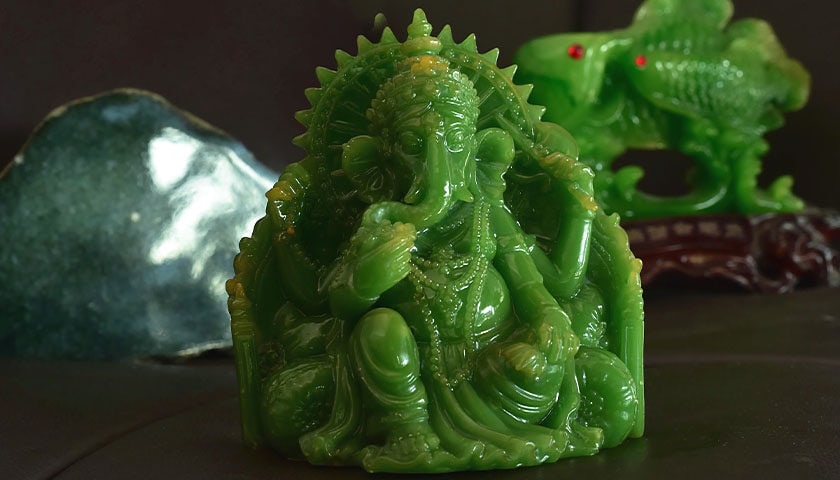
The significance of Green Jade transcends its physical beauty. In East Asian cultures, particularly China, it symbolizes purity, moral integrity, and grace. It’s often used in intricate carvings, jewelry, and ceremonial objects, embodying both artistic expression and spiritual ideals.
In Mesoamerican civilizations, such as the Olmecs and the Mayas, Jade held a status equivalent to that of diamonds and gold in the West. Its rarity and difficulty to work made it a symbol of power and status.
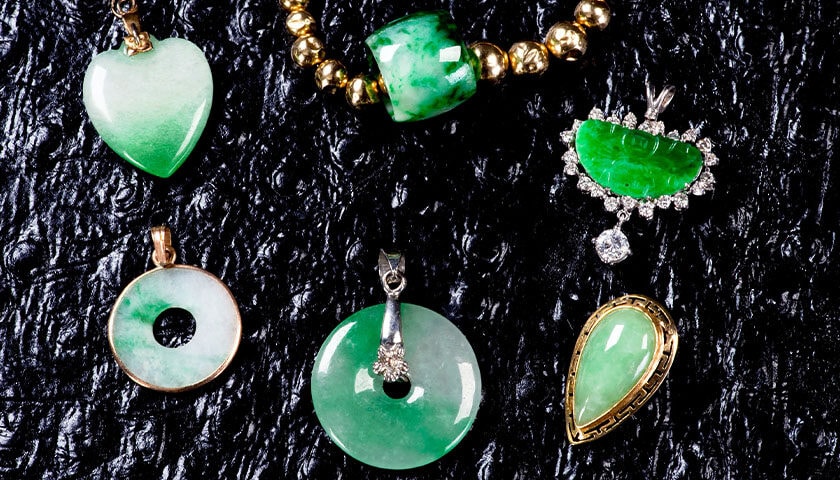
Green Jade’s story is one of geology, history, and art. It mirrors human civilization in many ways – evolving, enduring, and always captivating. As we delve deeper into the various aspects of Green Jade, from its geological formation to its metaphysical properties, we uncover a narrative that is as rich and complex as the stone itself.
Physical and Metaphysical Properties of Green Jade

Green Jade, treasured not only for its aesthetic appeal but also for its physical robustness and metaphysical attributes, has been a subject of fascination in various cultures. This section delves into both the tangible physical characteristics and the more intangible metaphysical properties attributed to this enigmatic stone.
Color Variations and Their Meanings
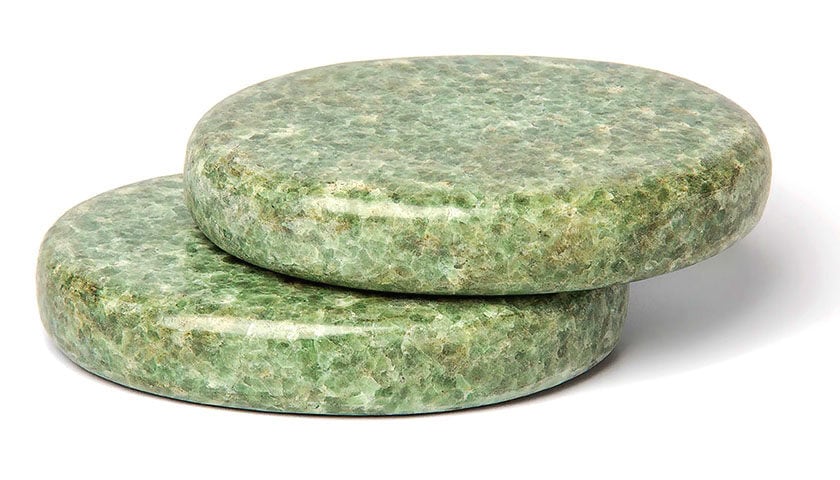
- Shades of Green: The most iconic color of Jade is green, ranging from pale, almost pastel shades, to deep, intense emerald hues. The specific shade of green depends on the trace elements present, with chromium contributing to the richer greens and iron to the lighter tones.
- Color Symbolism: In many cultures, the green color of Jade is associated with life, renewal, and nature. The deep green varieties, often considered more valuable, are seen as symbols of purity and moral integrity.
Textural Characteristics
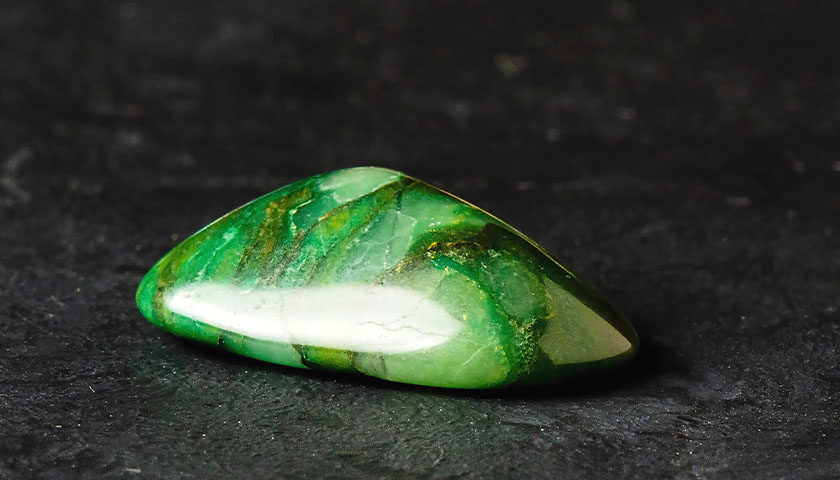
- Smoothness and Luster: Green Jade is renowned for its smooth texture and waxy to silky luster. This tactile quality has made it a preferred material for carving and sculpting.
- Toughness and Durability: One of the most significant physical properties of Jade is its toughness. Due to its interlocking crystal structure, it is extremely resistant to breaking and chipping, making it ideal for intricate carvings and durable jewelry.
Metaphysical Properties
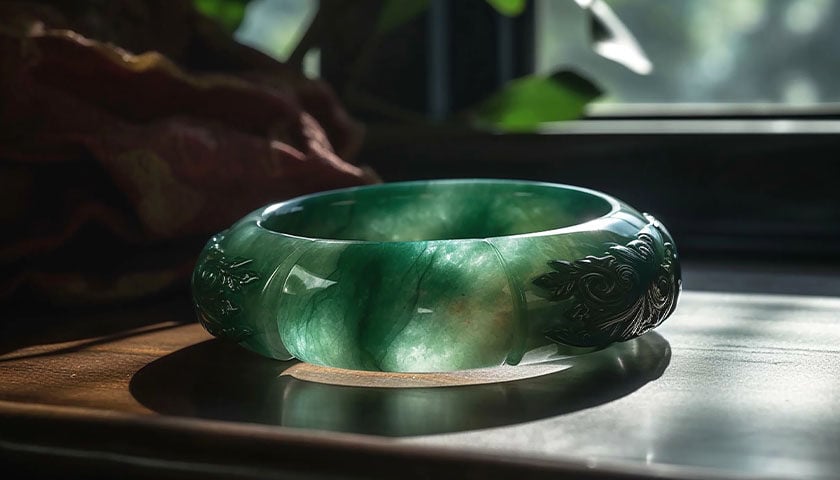
In the realm of metaphysical beliefs, Green Jade is attributed with a range of properties, from healing to spiritual.
Healing and Therapeutic Properties
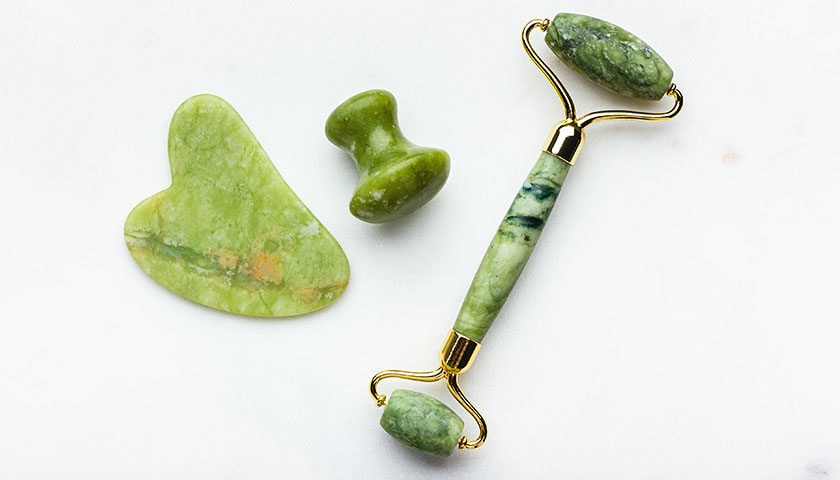
- Emotional Healing: It is believed that Green Jade can have a calming and stabilizing effect on the wearer, helping to reduce stress and foster a sense of peace and balance.
- Physical Health: Traditionally, Jade has been associated with healing properties, particularly related to the kidneys and adrenal glands. It’s thought to aid in detoxification and to enhance the body’s self-healing powers.
Spiritual and Energetic Influences
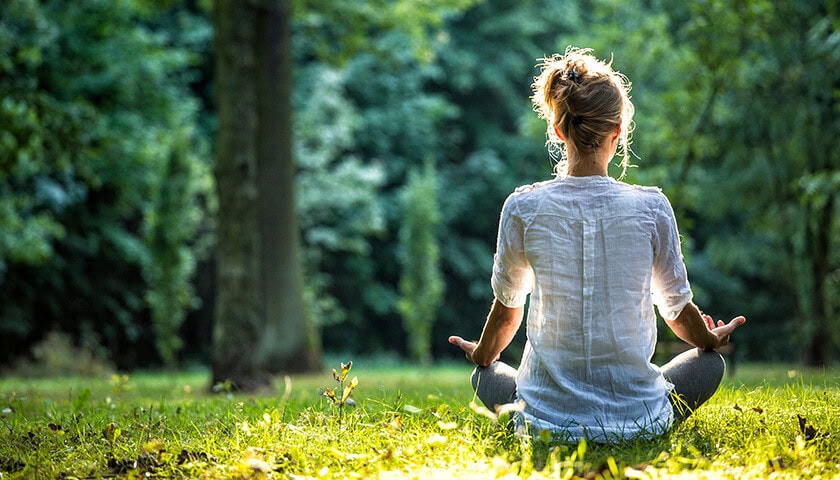
- Harmony and Balance: In energy work, Green Jade is seen as a stone of balance and harmony. It’s believed to help align the physical, emotional, and spiritual aspects of one’s being.
- Abundance and Prosperity: Many cultures view Green Jade as a stone of abundance and prosperity. It’s often used in rituals or carried as a talisman to attract wealth and success.
- Protective Qualities: Jade is also considered a protective stone, believed to shield the wearer from negative energies and to attract good luck and friendship.
Meditation and Mindfulness

- Enhancing Connection and Insight: Used in meditation, Jade is said to enhance one’s connection to the Earth and the universe. It’s believed to open the heart chakra, fostering a sense of empathy and deep insight.
- Promoting Peace and Reflection: The soothing energy of Green Jade makes it ideal for reflective practices. It’s thought to promote inner peace, wisdom, and a deeper understanding of oneself and others.
The physical and metaphysical properties attributed to Green Jade combine to make it a stone that is valued not only for its external beauty but also for its internal virtues. Whether admired for its toughness and luster or cherished for its supposed healing and spiritual benefits, Green Jade continues to be a stone that captivates and enchants.
Healing and Therapeutic Properties of Green Jade
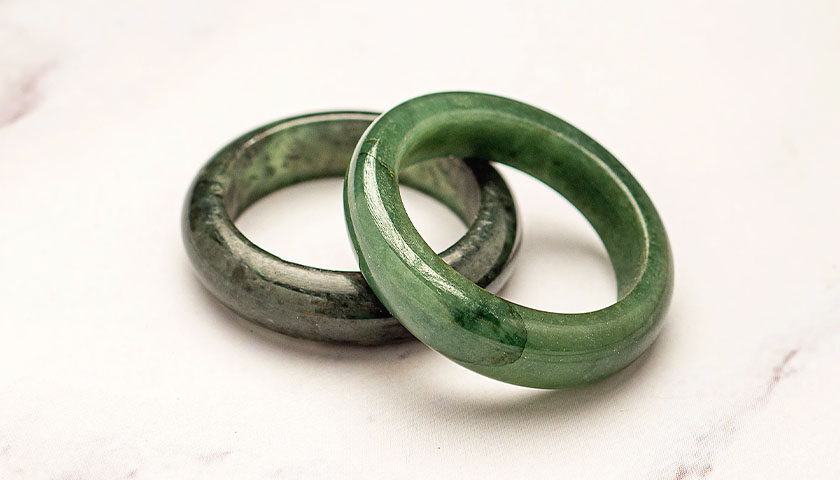
Green Jade has been esteemed not just for its physical allure but also for its reputed healing and therapeutic properties. These beliefs, deeply rooted in various cultural traditions, attribute to Jade a range of benefits for both physical health and emotional well-being.
Traditional Healing Uses
- Kidney Function: Historically, Jade has been linked to the health of the kidneys, with ancient practitioners believing in its ability to treat kidney ailments and improve the filtration and detoxification processes of the body.
- Pain Relief: In some traditions, Jade is thought to possess anti-inflammatory properties, making it beneficial for relieving pain and healing ailments related to joints and muscles.
- Enhancing Immunity: Jade is often associated with bolstering the body’s defense mechanisms, potentially aiding in faster recovery from illness and promoting overall vitality.
Modern Crystal Healing Perspectives

- Emotional Balance: In crystal healing circles, Green Jade is believed to emit calming and grounding energies, which can be helpful in easing anxiety, emotional turmoil, and stress.
- Mental Clarity: It is also considered a stone of wisdom and clarity, believed to enhance decision-making, promote insight, and encourage ambition and achievement.
- Harmonizing Energy: Known for balancing energies, Jade is thought to harmonize the mind, body, and spirit, fostering a sense of peace and stability.
Physical Health Benefits

- Detoxification: Green Jade is sometimes used in therapies aimed at detoxifying the body, purportedly supporting the body’s natural cleansing processes.
- Skin Health: The stone is also thought to have benefits for the skin, with some cultures using Jade rollers to enhance skin elasticity and complexion.
- Reproductive Health: There are beliefs that attribute to Jade the ability to positively influence fertility and childbirth, making it a favored stone for women seeking to conceive or ensure a smooth pregnancy.
Metaphysical Healing

- Chakra Balancing: In the realm of chakra healing, Green Jade is associated with the heart chakra. It’s believed to open and balance this chakra, promoting emotional healing and enhancing one’s capacity for love and compassion.
- Protection and Cleansing: As a protective stone, Jade is thought to ward off negative energies, creating a safe and nurturing space for the wearer or the environment where it is placed.
- Attracting Good Fortune: Beyond its protective qualities, Jade is often seen as a stone that attracts good luck, abundance, and prosperity.
Usage in Healing Practices
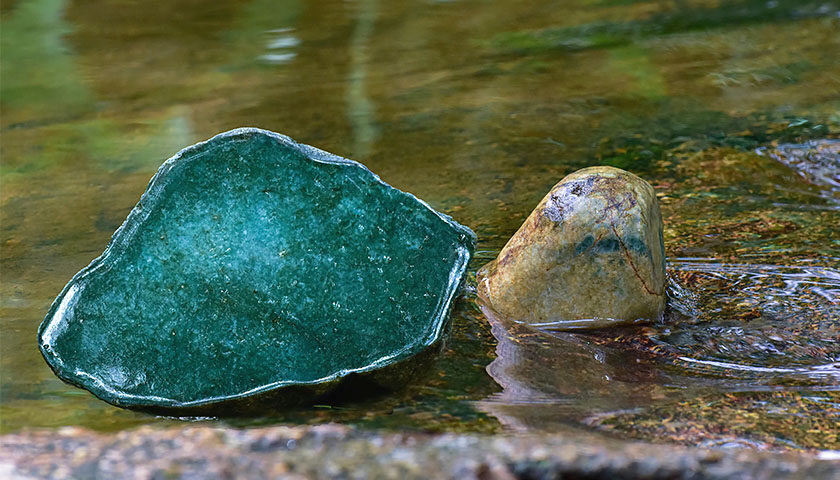
- Meditative Practices: Used in meditation, Jade can aid in achieving a state of calm and balance, helping practitioners to ground themselves and find inner peace.
- As a Wearable Stone: Worn as jewelry, Green Jade is believed to continuously impart its healing energies, providing a constant source of its beneficial properties.
- In Holistic Therapies: Green Jade is sometimes incorporated into holistic therapies, such as massage and energy healing sessions, to enhance the therapeutic effects.
While many of these healing properties are rooted in tradition and metaphysical beliefs rather than scientific evidence, the enduring popularity of Green Jade in wellness and healing contexts speaks to its special place in human culture and spirituality. Whether used for its physical beauty or its reputed healing powers, Green Jade continues to be a gemstone that captivates and nurtures.
Geological Properties of Green Jade
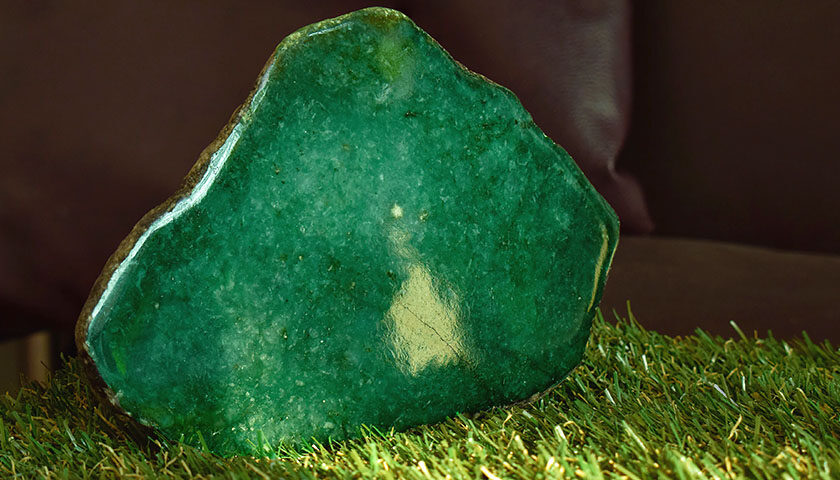
Green Jade, with its mesmerizing hues and intricate patterns, is not just a stone of beauty but also of fascinating geological complexity. Understanding its geological properties requires a dive into the realms of mineralogy and geology.
Formation and Composition
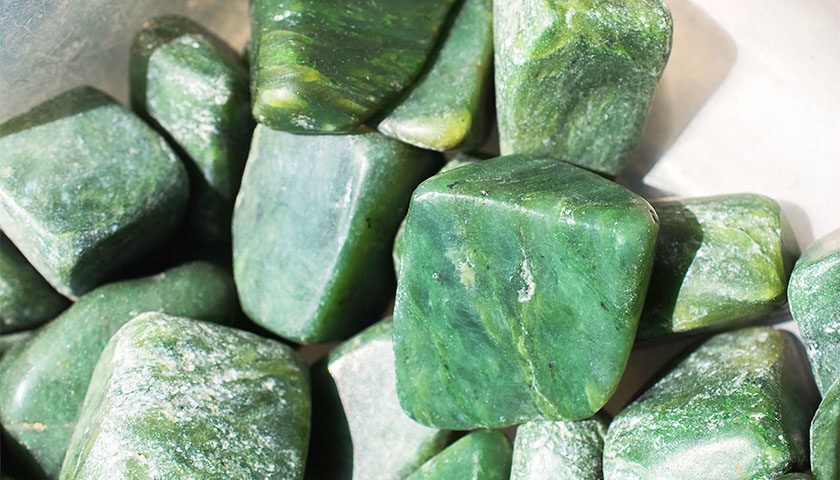
Nephrite vs. Jadeite
Green Jade is primarily classified into two types: Nephrite and Jadeite, both distinct in their mineral composition and formation processes.
- Nephrite: This form of Jade is a variety of the mineral actinolite, belonging to the amphibole group of silicate minerals. It’s composed mainly of calcium and magnesium silicate. Nephrite typically forms in metamorphic rocks and can be found in various shades of green, often veined or mottled, lending it a unique appearance. The color variations are due to the presence of trace elements like iron.
- Jadeite: Unlike Nephrite, Jadeite is a pyroxene mineral rich in sodium and aluminum. This type of Jade forms under higher pressure conditions in metamorphic rocks and is rarer than Nephrite. Jadeite can exhibit a wider range of colors, including the highly valued emerald green, known as “Imperial Jade.” This vibrant color is a result of chromium impurities.
Locations and Mining
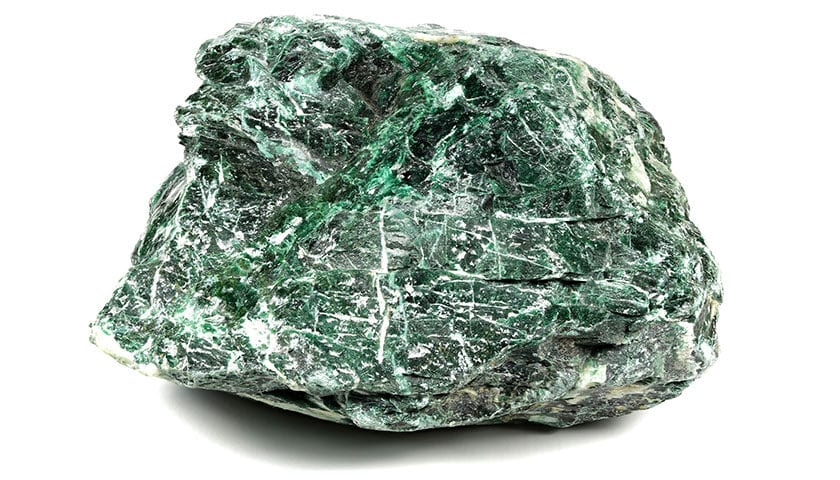
Green Jade is mined in several parts of the world, each location contributing to the stone’s diversity in terms of color, texture, and quality.
- China: Historically, China is known for its Nephrite deposits, particularly in regions like Xinjiang and Liaoning. The Chinese have revered Jade for millennia, using it in various cultural and artistic applications.
- Myanmar (Burma): Myanmar is famous for its high-quality Jadeite, particularly the Imperial Green variety. The stone is mined in the northern regions, primarily around the city of Mandalay.
- Canada: British Columbia in Canada is another significant source of Nephrite Jade. The deposits here are often found in riverbeds and glacial deposits.
- New Zealand: Known for its unique variety of Nephrite, often called “Pounamu” or “Greenstone,” New Zealand’s Jade is culturally significant to the Māori people.
- Russia and Guatemala: These countries also contribute to the global supply of Jade, with Russia having deposits of Nephrite and Guatemala known for its quality Jadeite.
The mining of Jade, particularly Jadeite, is a labor-intensive process due to the stone’s toughness. The extraction often involves removing large boulders from riverbeds or mountainsides, followed by detailed cutting and carving to reveal the stone’s true beauty.
The geological journey of Green Jade, from the depths of the earth to the hands of skilled artisans, is a testament to its enduring allure. Its formation, composition, and the global quest for its extraction make it not just a gemstone but a piece of Earth’s deep history.
History
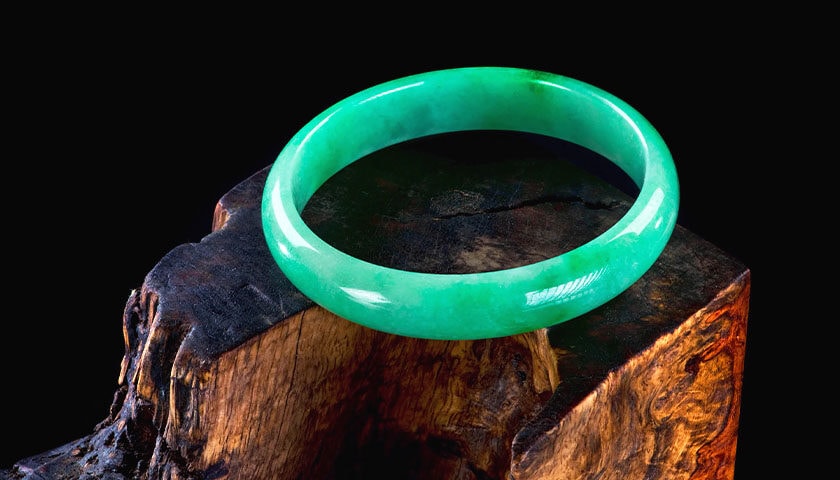
The historical journey of Green Jade is as rich and variegated as the stone itself. Revered for millennia, its legacy spans across continents, cultures, and ages, embodying a deep-seated significance in human history.
Ancient Civilizations and Jade
Jade’s allure and significance are rooted in ancient history, where it was more than just a material object; it was a symbol of status, spirituality, and power.
East Asia and Jade
- China: In Chinese civilization, Jade holds a place of unmatched reverence. As early as the Neolithic period, Jade was used in rituals and ceremonies. It symbolized purity, moral integrity, and was often associated with the virtues of the Chinese philosopher Confucius. The famous Chinese Jade burial suits, designed to ensure immortality, are a testament to its significance in life and death.
- Other East Asian Cultures: In Japan and Korea, Jade was valued for its beauty and supposed mystical properties. It was used in ornaments and sometimes in the construction of palaces, symbolizing status and power.
Mesoamerica and Jade
- The Mayans and Aztecs: In Mesoamerican cultures, Jade was more valuable than gold. It was a symbol of life, fertility, and power. Rulers adorned themselves with Jade jewelry, and it was often used in religious rituals and as grave offerings for high-ranking individuals.
The Evolution of Jade Use Through Ages
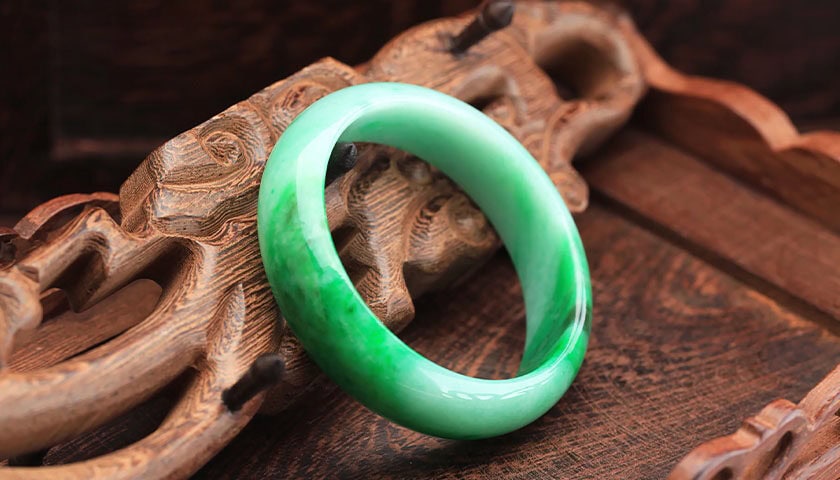
The use of Jade evolved over the centuries, adapting to the changing tastes and values of societies.
- From the Middle Ages to the Renaissance: While Jade’s popularity in the West during these periods wasn’t as pronounced as in the East, it was still a known commodity, often brought back by traders and explorers.
- The Age of Exploration: With increased interaction between the East and West, Jade became more known in Europe and America. Its allure led to a blend of artistic styles and an appreciation of its unique properties in Western cultures.
- Modern Times: Today, Jade is a globally recognized gemstone. It is used in jewelry, decorative items, and continues to be a part of cultural traditions in many Eastern societies. In the West, it’s valued both for its aesthetic beauty and its connections to Eastern spirituality and healing practices.
The historical significance of Green Jade is a narrative of cultural intersections. It’s a story that illustrates how a single stone can encapsulate the wealth of human traditions, beliefs, and artistic expressions. Jade’s enduring legacy is a reflection of its intrinsic beauty and the deep human desire to connect with the natural world through objects of significance.
Green Jade in Culture and Mythology
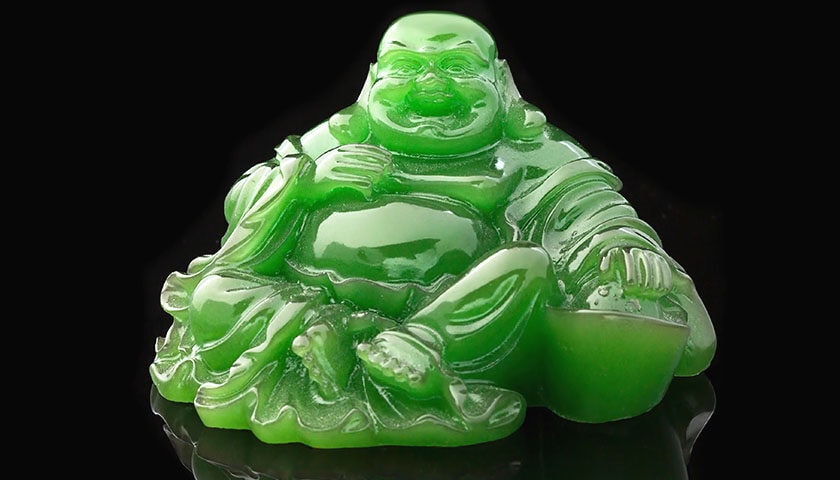
Green Jade has not only been a symbol of beauty and rarity but also a rich source of myth and lore across various cultures. Its deep green hue and lustrous sheen have inspired numerous cultural beliefs, myths, and symbolic associations.
Symbolism in Different Cultures
Chinese Traditions
- Symbol of Virtue and Purity: In Chinese culture, Jade is deeply intertwined with values of virtue, purity, and moral integrity. Confucian ideology elevates Jade as an emblem of noble qualities such as wisdom, justice, compassion, and modesty.
- Connection with the Spiritual Realm: Jade is believed to bridge the physical and spiritual realms. It’s used in religious ceremonies and is thought to protect the wearer from evil spirits.
- Imperial Significance: Jade was historically reserved for royalty, symbolizing power and immortality. The Imperial Green Jade, in particular, was considered the most precious and was often used in the crafting of imperial items and jewelry.
Mesoamerican Beliefs
- Symbol of Life and Fertility: For the Mayans, Aztecs, and other Mesoamerican cultures, Jade was a symbol of life and fertility. It was associated with water and vegetation, elements crucial for life and growth.
- Sacred Stone of the Gods: Jade was often used in rituals and offerings to gods. It was believed to have magical properties, enabling communication with the divine and the ancestors.
Modern Cultural Significance
In contemporary times, the cultural significance of Jade persists, though it has evolved.
- Artistic and Aesthetic Value: Today, Jade is prized for its aesthetic qualities and is widely used in jewelry and art. Its deep green color and unique texture make it a favored material among artists and craftsmen.
- Symbol of Cultural Identity: For many East Asian and Mesoamerican communities, Jade remains a symbol of cultural identity and heritage. It’s not just a stone but a representation of ancestral wisdom and traditional values.
- Spiritual and Healing Properties: In the realm of metaphysics and alternative healing, Jade is believed to possess healing properties. It’s often used in practices like crystal healing and meditation, where it’s said to promote balance, harmony, and peace.
The cultural and mythological tapestry woven around Green Jade is as enduring as the stone itself. From being a symbol of imperial power in ancient China to a sacred stone in Mesoamerica, and now a cherished gemstone worldwide, Jade’s journey through time and space reflects its timeless allure and profound symbolic significance.
Green Jade in Art and Ornamentation
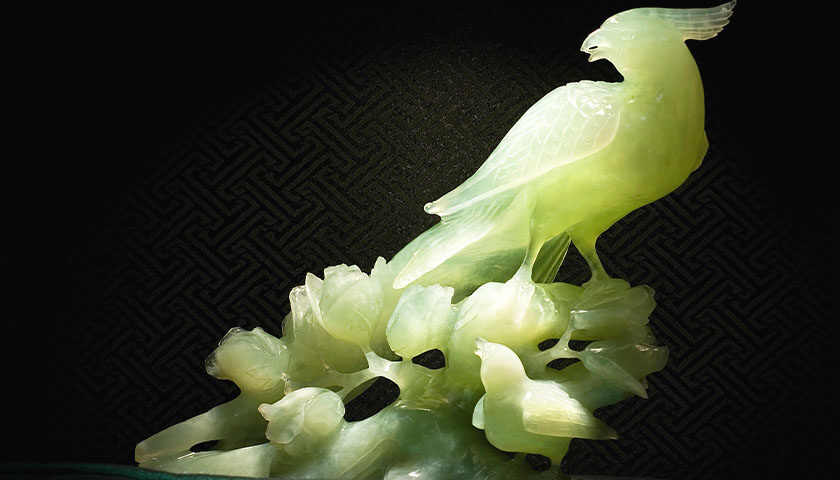
Jade, particularly Green Jade, has held a significant place in the realms of art and ornamentation across various cultures. Its allure, durability, and symbolism have made it a favored material for artists and craftsmen throughout history. This section explores Jade’s use in artistic expression and decorative arts.
Green Jade Carving Techniques
- Intricate Carvings: Jade’s toughness makes it suitable for detailed and intricate carving. Traditional carving techniques often involve slow, meticulous work, often done by hand, to create delicate designs and patterns.
- Tools Used: Historically, artisans used simple tools made from harder materials like diamond or quartz for carving Jade. Today, modern tools such as rotary tools and diamond-tipped drills allow for more precision and complexity in designs.
- Symbolic Motifs: Common motifs in Jade carvings include natural elements like flowers and animals, as well as symbols of luck, prosperity, and spiritual beliefs. For example, in Chinese art, dragons, phoenixes, and Buddhas are frequently depicted in Jade.
Famous Jade Artifacts
- Chinese Jade Artifacts: China, with its long history of Jade craftsmanship, has produced numerous famous Jade artifacts. These include the intricate Jade burial suits, designed to ensure immortality, and beautifully carved Jadeite cabbage, representing purity and virtue.
- Mesoamerican Jade: The Olmecs, Mayans, and Aztecs crafted Jade into masks, jewelry, and figurines. These artifacts often held religious or ceremonial significance and were sometimes used as grave offerings.
- Maori Jade Weapons and Ornaments: The Maori of New Zealand are known for their skill in carving Pounamu (Greenstone or Nephrite). They crafted weapons, tools, and ornaments, each carrying deep cultural and spiritual meaning.
Green Jade in Jewelry

- Symbolic and Decorative Jewelry: Jade is a popular choice for jewelry due to its beauty and the belief in its protective and auspicious qualities. It is fashioned into various forms, including bangles, necklaces, earrings, and pendants.
- Cultural Variations: The style and design of Jade jewelry can vary significantly across cultures. In East Asia, Jade jewelry often features traditional motifs and is sometimes combined with precious metals like gold and silver.
Modern Use in Decor and Design
- Contemporary Art: Modern artists and designers continue to explore the potential of Jade, incorporating it into various forms of contemporary art and high-end decor.
- Fusion of Traditional and Modern: There’s a growing trend of blending traditional Jade carving techniques with modern aesthetics, creating pieces that appeal to a wide range of tastes and styles.
Conservation and Imitation
- Preservation of Antique Pieces: Preserving ancient Jade artifacts is a significant aspect of cultural heritage conservation. Museums and collectors often go to great lengths to maintain the condition of these historical pieces.
- Imitations and Synthetics: Due to the high value of genuine Jade, the market has seen an influx of imitations and synthetic varieties. Discerning the authenticity of Jade has become an essential skill for collectors and enthusiasts.
Jade’s presence in art and ornamentation is a testament to its enduring appeal and cultural significance. From ancient carvings to modern designs, Jade continues to captivate with its timeless beauty and deep symbolic meaning. Whether as a centerpiece of a museum collection or a cherished personal ornament, Jade remains an integral part of artistic expression and human heritage.
Care for Green Jade
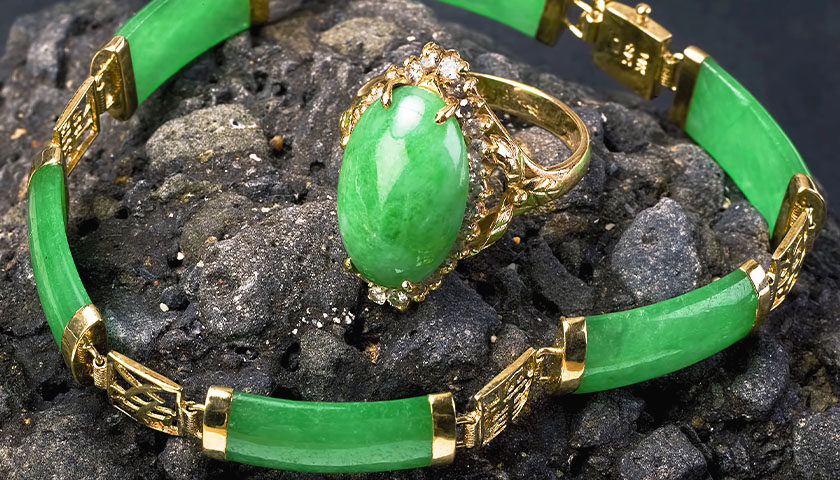
Proper maintenance and care are crucial for preserving the beauty and integrity of Jade, a gemstone valued both for its physical allure and cultural significance. Given its unique properties, Jade requires specific care practices to maintain its luster and prevent damage.
Cleaning and Storing
- Regular Cleaning: To maintain its sheen, clean Jade regularly with a soft, damp cloth. Avoid using harsh chemicals or abrasive materials, as they can scratch the surface.
- Mild Soap Solution: For a deeper clean, use a mild soap solution and a soft brush. Gently scrub the Jade to remove any accumulated dirt or oils, and then rinse it thoroughly with clean water.
- Drying: After cleaning, pat the Jade dry with a soft, lint-free cloth. Ensure it is completely dry before storage or wear.
- Avoid Prolonged Exposure to Sunlight: Prolonged exposure to direct sunlight can cause the color of Jade to fade. Store your Jade jewelry or artifacts in a shaded, cool place.
- Proper Storage: Store Jade pieces separately to avoid scratches from harder gemstones. Using a fabric-lined jewelry box or a pouch can provide good protection.
Common Damages and Repairs
- Scratches and Chips: Jade can be scratched or chipped if mishandled. If your Jade is scratched, a professional jeweler specializing in Jade can polish and restore its surface.
- Cracking: Avoid dropping Jade onto hard surfaces, as it can crack. In case of a crack, consult a professional for the best course of action, as repairs can be challenging.
- Chemical Exposure: Keep Jade away from harsh chemicals, including perfumes, hairsprays, and household cleaners, as they can damage the surface or alter the stone’s color.
- Temperature Fluctuations: Sudden temperature changes can damage Jade. It’s advisable to keep it away from extreme heat or cold sources.
Professional Maintenance
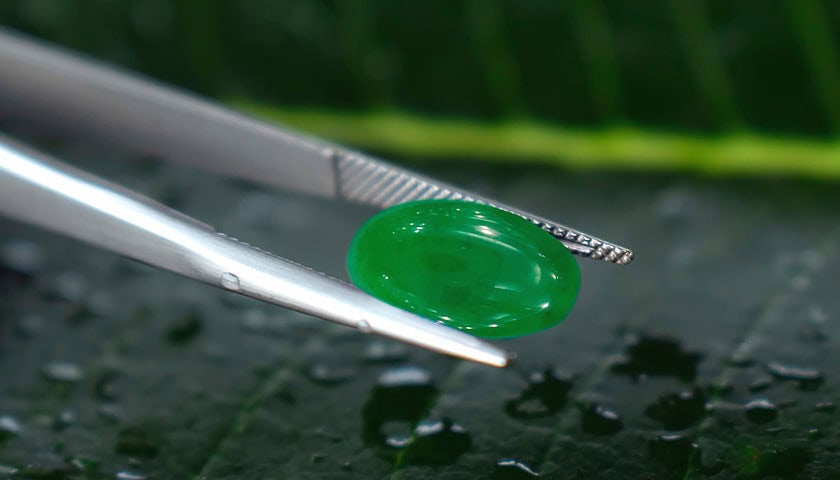
- Periodic Professional Cleaning: It’s beneficial to have Jade professionally cleaned occasionally, especially for intricately carved pieces or valuable antiques.
- Restoration Services: For antique Jade pieces or heirlooms, professional restoration services may be required to preserve their integrity and historical value.
Handling and Usage
- Gentle Handling: Handle Jade pieces gently to avoid accidental drops or knocks. When wearing Jade jewelry, put it on last to avoid contact with cosmetics or hair products.
- Regular Inspection: Regularly inspect your Jade for any signs of wear or damage, such as loose settings in jewelry, which can be preemptively fixed to avoid loss.
Proper care and maintenance of Jade not only preserve its physical appearance but also honor its cultural and historical significance. By following these guidelines, you can ensure that your Jade artifacts and jewelry remain beautiful and intact for years to come, retaining their place as cherished items of personal and cultural value.
The Timeless Allure of Green Jade

The journey through the world of Green Jade reveals a gemstone that is much more than a mere object of beauty. It is a symbol of history, culture, and spirituality, interwoven with human civilization across continents and ages. Green Jade’s allure lies not only in its aesthetic charm but also in its rich tapestry of meanings and uses.
From its geological formation, a testament to the wonders of the Earth, to its revered place in art, culture, and mythology, Green Jade stands as a bridge between the natural world and human creativity. Its physical properties of toughness and luster have made it a cherished material for artisans, while its array of colors and patterns has captivated the eyes and hearts of people around the world.

The historical significance of Green Jade is profound, marked by its role in ancient rituals, imperial courts, and as a symbol of status and spiritual connection. In modern times, this connection continues, with Green Jade being both a link to the past and a contemporary icon of style and holistic wellness.
In the realms of healing and metaphysics, Green Jade is embraced for its believed properties of harmony, balance, and protection. Whether these beliefs are rooted in tradition or personal experience, they add to the mystique and appeal of this extraordinary stone.
The artistry and craftsmanship associated with Jade, passed down through generations, are a testament to human ingenuity and reverence for nature’s gifts. The maintenance and preservation of Jade artifacts and jewelry are not just acts of care for a material object but a homage to our cultural and historical heritage.

